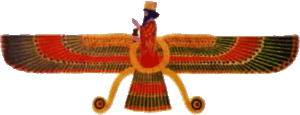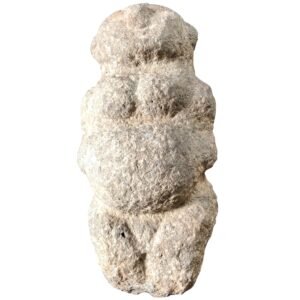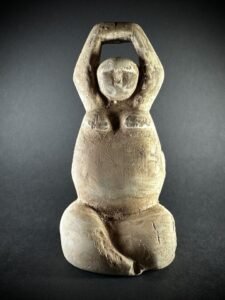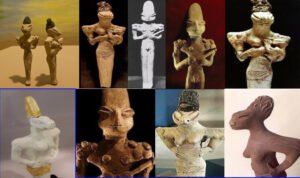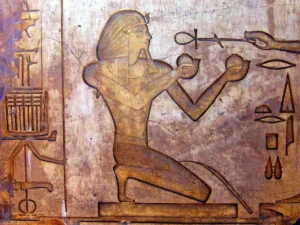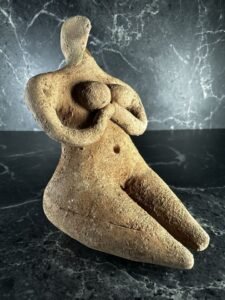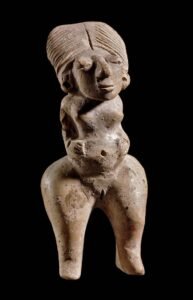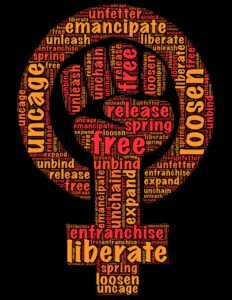Ahura Mazda (also spelled Ahuramazda), meaning “Wise Lord,” is the supreme god in Zoroastrianism, one of the world’s oldest monotheistic religions, founded by the prophet Zarathustra (or Zoroaster) in ancient Persia (modern-day Iran).
Category: Spirituality
A category for spiritual posts
Permanent link to this article: https://truthofself.com/zoroastrianism-ahura-mazda/
Permanent link to this article: https://truthofself.com/when-did-the-suppression-of-the-divine-feminine-begin/
Permanent link to this article: https://truthofself.com/understanding-of-the-divine-nature-of-the-hiding-of-the-divine-feminine-in-history/
Mar 26
From Mother to Father – A Spiritual Gender Dominance Shift?
The hypothesis of a historical shift from feminine dominance to masculine dominance in spiritual and religious expression is a widely discussed idea in anthropology, archaeology, and religious studies. While it remains a topic of debate, there is considerable evidence suggesting a gradual transition in spiritual focus and societal structures over millennia.
Permanent link to this article: https://truthofself.com/from-mother-to-father-a-spiritual-gender-dominance-shift/
Permanent link to this article: https://truthofself.com/the-maze-rock-petroglyph-and-how-it-visualises-the-creation-of-the-universe/
Mar 25
The Nippur tablet
The Nippur tablet, an ancient Sumerian artifact that is believed to hold significant clues regarding early astronomy and the astrological practices of the Sumerians.
Permanent link to this article: https://truthofself.com/the-nippur-tablet/
Mar 25
The Ubaid Culture
The Ubaid Culture The Ubaid culture is an important prehistoric culture in the ancient Near East, particularly in Mesopotamia, which laid the foundation for later civilizations such as the Sumerians. The Ubaid period (approximately 6500 to 3800 BCE) is known for its distinctive archaeological features, including pottery, settlements, and early forms of social organization. It …
Permanent link to this article: https://truthofself.com/the-ubaid-culture/
Permanent link to this article: https://truthofself.com/the-muses-who-is-keeping-you-enthused/
Mar 11
The lost tomb of Thutmose II
Permanent link to this article: https://truthofself.com/the-lost-tomb-of-thutmose-ii/
Feb 03
The Jōmon culture of Japan and the Mother Goddess
The Jōmon culture of Japan and the Mother Goddess The Jōmon culture is one of the oldest and most significant prehistoric cultures in Japan, known for its distinctive pottery, early agricultural practices, and complex social structures. The term “Jōmon” refers to the cord-marked pottery that the culture produced, which became a hallmark of their society. …
Permanent link to this article: https://truthofself.com/the-jomon-culture-of-japan-and-the-mother-goddess/
Feb 03
The Tel Halaf culture
Permanent link to this article: https://truthofself.com/the-tel-halaf-culture/
Permanent link to this article: https://truthofself.com/only-the-brainwashed-fear-brainwashing/
Jan 15
The Mythical Origins of Yoga
Permanent link to this article: https://truthofself.com/the-mythical-origins-of-yoga/
Jan 14
The mother goddess in Mesoamerica
The concept of a global Mother Goddess cult that believed it was a Goddess that is the source of creation as we know it, seems a strong one. As is the notion that it used very similar iconography and conceptualisations, which started quite vague and simplistic, but developed in complexity over time, and existed from the Palaeolithic to at least the end of the Bronze Age. This came to be replaced, often by force, by a patriarchal focussed cult which has resulted in most of the worlds religions we see today.
Permanent link to this article: https://truthofself.com/the-mother-goddess-in-mesoamerica/
Permanent link to this article: https://truthofself.com/sovereignty-and-the-authority-problem/
Jul 14
The God Marduk
Permanent link to this article: https://truthofself.com/the-god-marduk/
Jul 14
The Deified King Lugalbanda
Lugalbanda was a legendary Sumerian king of Uruk, often considered a hero in Mesopotamian mythology. He is known for his adventures and heroic deeds, and is also notable for being the father of the famous hero Gilgamesh, as mentioned in the Epic of Gilgamesh. His consort was Ninsun, a goddess, and he was later deified and worshipped in various Mesopotamian cities.
Permanent link to this article: https://truthofself.com/the-deified-king-lugalbanda/
Jul 13
The Goddess Ninsun
Ninsun, also known as Ninsumun, was a Mesopotamian goddess revered for her wisdom, beauty, and maternal care. She is best known as the mother of Gilgamesh, the hero of the Epic of Gilgamesh, and the wife of the deified king Lugalbanda. Ninsun’s name, which means “Lady of the Wild Cows,” reflects her association with bovine qualities, symbolizing nurturing and fertility.
Permanent link to this article: https://truthofself.com/the-goddess-ninsun/
Jul 13
The Goddess Ninlil
Permanent link to this article: https://truthofself.com/the-goddess-ninlil/
Jul 13
The God Utu
Permanent link to this article: https://truthofself.com/the-god-utu/

